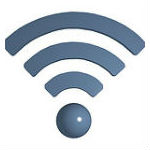 The FCC is poised to adopt a spectrum sharing plan that could make 150 MHz of spectrum available for wireless broadband on a nearly nationwide basis. The spectrum lies in the 3550-3700 MHz band currently used by army and navy radar in limited geographic areas, and military users would continue to have priority access to the spectrum, explained senior FCC officials on a conference call with reporters Friday.
The FCC is poised to adopt a spectrum sharing plan that could make 150 MHz of spectrum available for wireless broadband on a nearly nationwide basis. The spectrum lies in the 3550-3700 MHz band currently used by army and navy radar in limited geographic areas, and military users would continue to have priority access to the spectrum, explained senior FCC officials on a conference call with reporters Friday.
FCC Chairman Tom Wheeler is circulating a draft of a report and order that would formalize many of the 3550-3700 MHz spectrum sharing recommendations made by the President’s Council of Advisors on Science and Technology in 2012. The commission is expected to vote on the report and order next month.
How to Share Spectrum
According to the FCC officials, the plan calls for a three-tier system with incumbent military users having priority access to the spectrum, a second tier of licenses made available through an auction and a lower tier that would be available for unlicensed use. Users in each tier would be prohibited from interfering with users in higher tiers. Officials declined to say what portion of the band would be auctioned.
One important change since PCAST made its original recommendations is that plans now call for smaller exclusion zones for military users along coastlines and around army training bases. Those zones now are 77% smaller than they were in initial recommendations. For example, zones around army training bases initially would have had a 60 kilometer radius but new recommendations call for zones with radiuses of just three kilometers, officials said.
The report and order calls for spectrum to be made available in two phases. Initially non-military users would be prevented from operating in the exclusion zones. In Phase 2, the lower-priority users would be allowed to use sensing technology to determine whether spectrum in the exclusion zones is in use by the military and, if not, those users would be allowed to use the spectrum. In the event that sensing technology is ready for use by lower-priority users before the commencement of Phase 1, the plan would be to move directly to Phase 2. Sensing technology would be built into wireless base stations or into end user devices.
Some stakeholders have proposed using spectrum in the 3550-3700 MHz band for LTE-Unlicensed, and according to the FCC officials, there is nothing in the draft order preventing the spectrum from being used for LTE-U for either two-way or supplemental downlink communications.
The 3550-3700 MHz band has been given the name “Citizens Broadband Radio Service” – a moniker about which some reporters on Friday’s call couldn’t resist making “Smokey and the Bandit” and “10-4” jokes.


